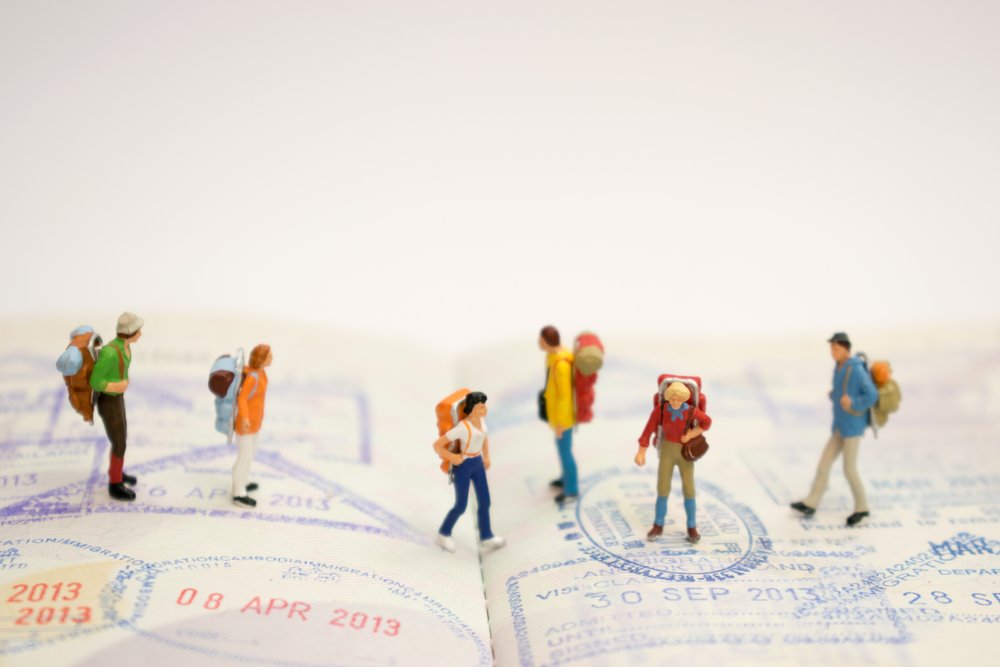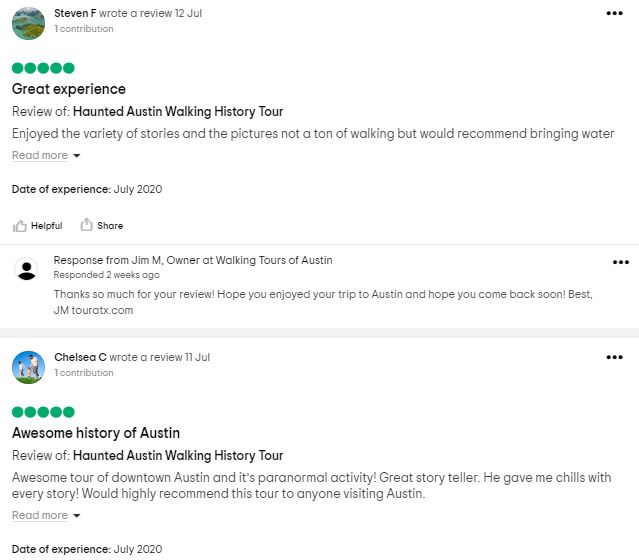6 Tips for Tourism Companies to Win More Customers

With the internet taking over our lives, online presence has become more and more important to people and even more so for businesses. A good online presence enables brands to reach more potential customers and build their reputation.
Consumers are now browsing the web to search for products and services they need. This is because it allows easy gathering of data about the business of interest such as the location, opening hours, phone number, and feedback from previous customers. Moreover, it doesn’t stop with online presence. Businesses are also realizing the importance of a good web design, increasing the visibility of their website, and boosting their engagement on social media.
This is even more true for the tourism industry. People are using the internet for their travel plans from picking their destinations, booking their hotels, hunting the best deals for airfare, to picking their activities during the trip. A 2018 study commissioned by Facebook IQ found that 90% of US leisure travelers use online channels to purchase flights. When it comes to destination inspiration, 36% use Facebook apps, 30% use travel review sites, and 26% use search engines, and the other 26% use airline sites.
It can be difficult to get new customers if your travel or tourism-related business can’t be found through a simple online search. Thus, it’s become essential for travel brands to build a strong digital presence. To achieve this, it’s not enough that you have a great website or thousands of followers on your social media page. To win more customers, your efforts should be built on a solid foundation of quality customer experience.
Try the following tips to get discovered:
1. Rank in Google Search
Google receives over 63,000 searches per second on any given day, which translates to 228 million searches per hour. Google has dominated the search engine market, maintaining over 87% market share as of the first quarter of 2020. The search engine crawls the web and determines which pages are the most relevant for its users. It is a known fact that the first page of Google captures the majority of traffic. Study shows that 92% of searchers will pick businesses on the first page of local search results.
More so, the clickthrough rate declines after the top spot, from 36% for the first result down to 2.2% for the 10th result. This is why it’s important to get your web pages, blogs, and other related links within the first page of search engine results. Earning a top spot makes businesses in the tourism industry even more visible to their respective target audiences. Every company wants that coveted front page spot but search results are based on a number of metrics. It will help your Google search ranking if you make sure that your website is easy to navigate, quick to load, and offers valuable, unique content.
2. Optimize “Near Me” Search
A “near me” search demonstrates a user’s eagerness to take immediate action. Not optimizing for local SEO means your business is missing out on ranking locally for 46% of all Google searches. In the past two years, there has been 150% growth for phrases like “near me now” (e.g. “hotel near me now” or “car rental near me now”) and 900% growth for phrases like “near me tonight/today”. Most people enable GPS or location on their phones, allowing Google to suggest the most localized and relevant search results based on their current location.
According to Google, they determine local ranking by the site’s relevance to the user, distance (if location is not specified), and prominence or how well-known the business is. One of the ways to optimize “near me” searches, update your Google My Business profile and list your company’s address, contact information, hours of operation, industry, and keywords. It also helps to landmark famous establishments such as hotels, museums, or restaurants nearby that are familiar to users. Google support provides more tips on how businesses can improve their local search rankings.
3. Create a GMB Profile
Google My Business (GMB) is a free and easy-to-use platform that helps businesses create and manage their online presence across Google. By creating a GMB profile, your store will start showing up in local searches and Google Maps, allowing users to see how close you are to their location. It also increases your chances of making it onto Google’s highly sought-after local 3-pack. It is the section of Google’s search results that shows 3 local businesses related to your query. The list is found on the top most part of the page, enclosed in a box, showing a section of the map. Businesses that show up on the local 3-pack get up to 700% boost in clicks over businesses that don’t.
According to a study, 56% of local retailers haven’t claimed their free GMB account. Not only are they missing out on fast and free advertising but also opportunities to stand out from competitors, gain more customers, and increase sales. A study conducted by Google and Ipsos MediaCT and Purchased found that “50% of consumers who conducted a local search on their smartphone visited a store within a day.” In addition, a GMB account makes it easier for customers to share their experiences about your business by leaving reviews.
4. Use the Power of Reviews
Travel companies that are not listed on any review platforms are allowing an opportunity to gain hundreds or thousands of customers slip through their fingers. Tripadvisor alone has more than 37 million visitors monthly. Meanwhile, Yelp has over 35 million average monthly mobile app unique users. Travelers use customer reviews to get a general picture of what their experience would be like, without having to personally experience it first. Let’s say your company has a great reputation with past customers, how would someone who is looking you up online know that? By collecting customer reviews, you are demonstrating social proof. If people see feedback from satisfied customers, it can eliminate any lingering doubts they may have toward your business.
A recent study by Tripadvisor reveals that online reviews continue to influence booking decisions among travelers. About 70% of the participating users cited descriptive and helpful reviews as their primary reason for visiting the site. For hotels, restaurants, and attractions, more than 85% or 4 out of 5 participants report that the reviews they read accurately reflect their experience. Reviews also go beyond boosting your reputation as they can increase website traffic. Search engine spiders like unique content that’s regularly updated. When customers continuously leave reviews, fresh content can advance your website on search engine results pages. Thus, drawing more potential customers to your business.
Generating a steady stream of reviews can be a challenge. There are plenty of travel businesses that offer excellent service but still lack customer reviews. Most complain of the process of requesting reviews being too draining. Truly, tracking down customers and asking for reviews one-at-a-time can waste valuable time and manpower. Nevertheless, companies can now automate the review request process using the right customer interaction management software. It offers convenient functions like automatically asking customers for feedback through text or email, automatically posting positive reviews to your business page, letting you reply quickly to reviewers, and more.

5. Communicate with Customers
Effective communication with your customers can lead to increased sales, repeat business, and referrals. Study shows that the top reason why customers switch to a new brand is feeling unappreciated. This is why companies should ensure that their communications meet the “be there, be useful, be quick” mantra. You should maintain communication with customers at every point of their buying journey, making it easy for them to make a purchase. More so, instantly connect with them if they need assistance. There are many ways customers can contact you:
Livechat – This has consistently been the top support channel of choice. A Kayako study found that 41% of consumers prefer live chat over other channels. In addition, 51% of consumers are more likely to stay with or buy again from a company if they offer live chat support. The average customer satisfaction rating for live chat globally is 83.1%. However, this can only work if you have the resources to manage incoming communication. Giving quality live chat support can demand more time and attention compared to other channels.
Chatbot – This AI program is designed to conduct conversations with customers when a human support representative is not available or after business hours. Over 1.4 billion people are using chatbots on a fairly regular basis. It’s a great option for questions that can be preloaded and answered automatically. (e.g. “what are your working hours?” “where are you located?”) In fact, chatbots can answer 80% of standard questions. It’s a way to ensure that customers receive the instant response that they demand.
Text Messaging – The average American checks their phone 47 times a day which is why SMS messages have a whopping 98% open rate. Text messages also have a 209% higher response rate than email, Facebook, and phone calls. Study shows that consumers who get marketing messages through texts are 40% more likely to convert than those who don’t. With a text-based web chat, all customer queries are stored in your Inbox, allowing you to answer them at your convenience. Your responses will go straight to a customer’s phone as texts.
When your business offers more than one channel of communication for customers, it can be easy to lose track of messages. Thus, you need a customer interaction management system to make sure that no customer gets left behind. A unified Inbox feature will greatly help in managing texts, Facebook messages, and chats. It lets you respond to all messages from multiple channels from one place.
6. Get on Social Media
Since the emergence of social media, the traveler’s journey has become very different than it used to be. Tourists no longer rely on guidebooks or paper maps. Instead, they now collect information across the web for their travel plans. A recent survey found that 87% of Millennials use Facebook for travel inspiration, while 20% use Twitter and Pinterest. As a tour business, you cannot afford to not be active on social media. It is a free space where you can display what you offer, provide tips, and generate interest in your tour locations. Whether it’s on Facebook, Instagram, or Twitter, social media platforms allow you to inspire, connect with, and guide travelers throughout their journeys, and even spark new ones.
Ready to Win More Customers?
These are just a few of the simple things you can do to attract more customers to your travel hospitality, or tourism-related business. It’s not about being the biggest company out there. But it’s about giving your customers the best experiences, maintaining an open line of communication, and using the right tools! Make it a priority to work on your marketing and make it as effective as possible to attract new leads and customers. Maybe you’re still in the planning stages, and not quite ready to implement these strategies yet. If that’s the case, talk to us! With the help of Smart Review, you can grow your business through reviews automatically.


